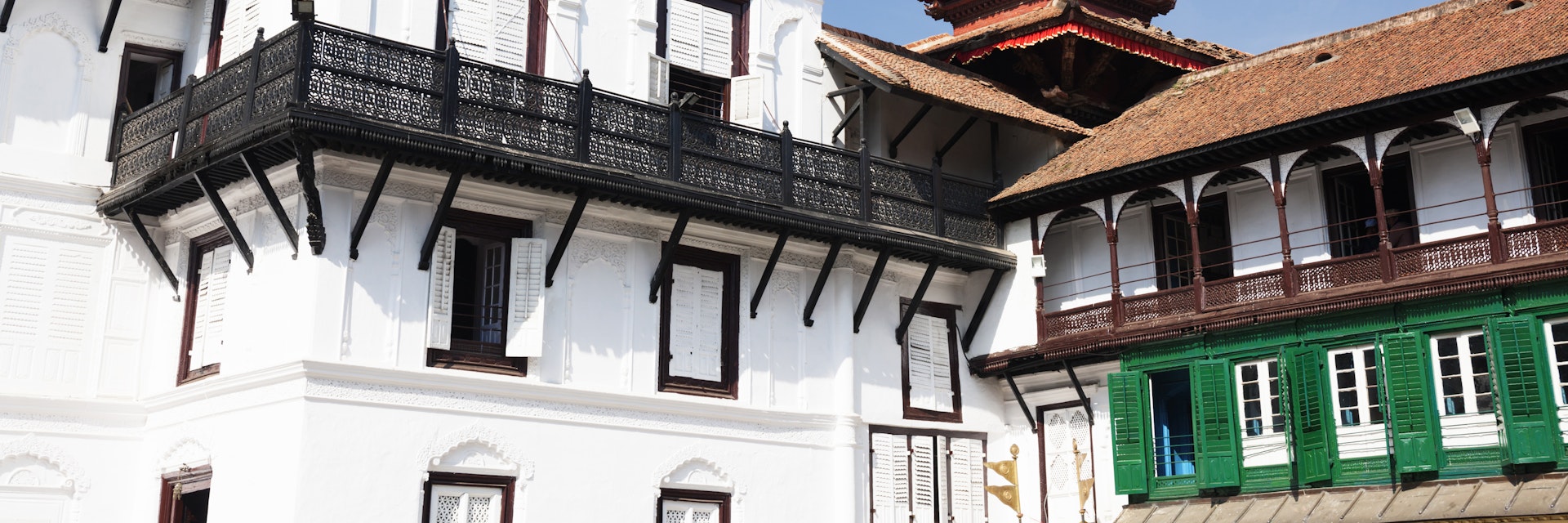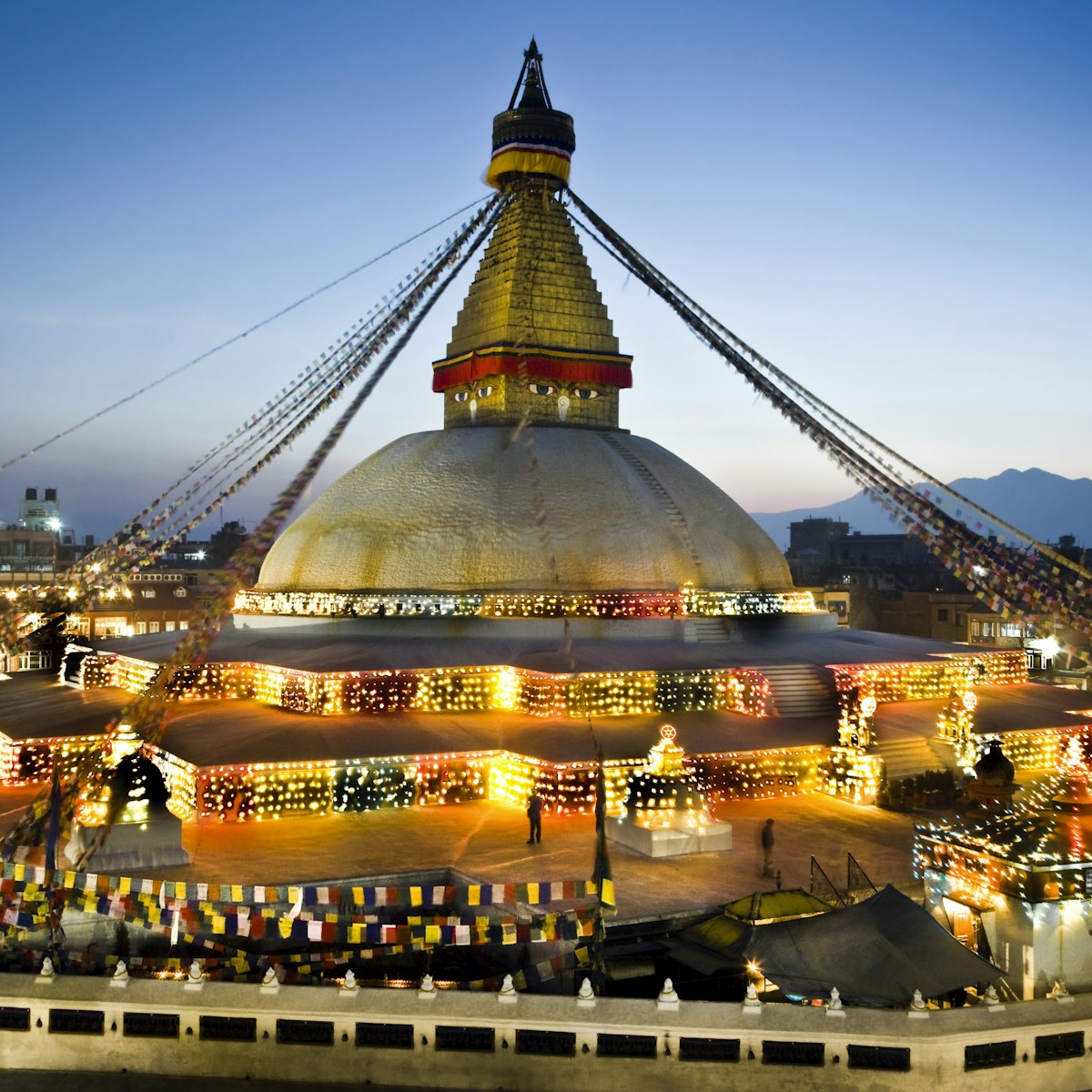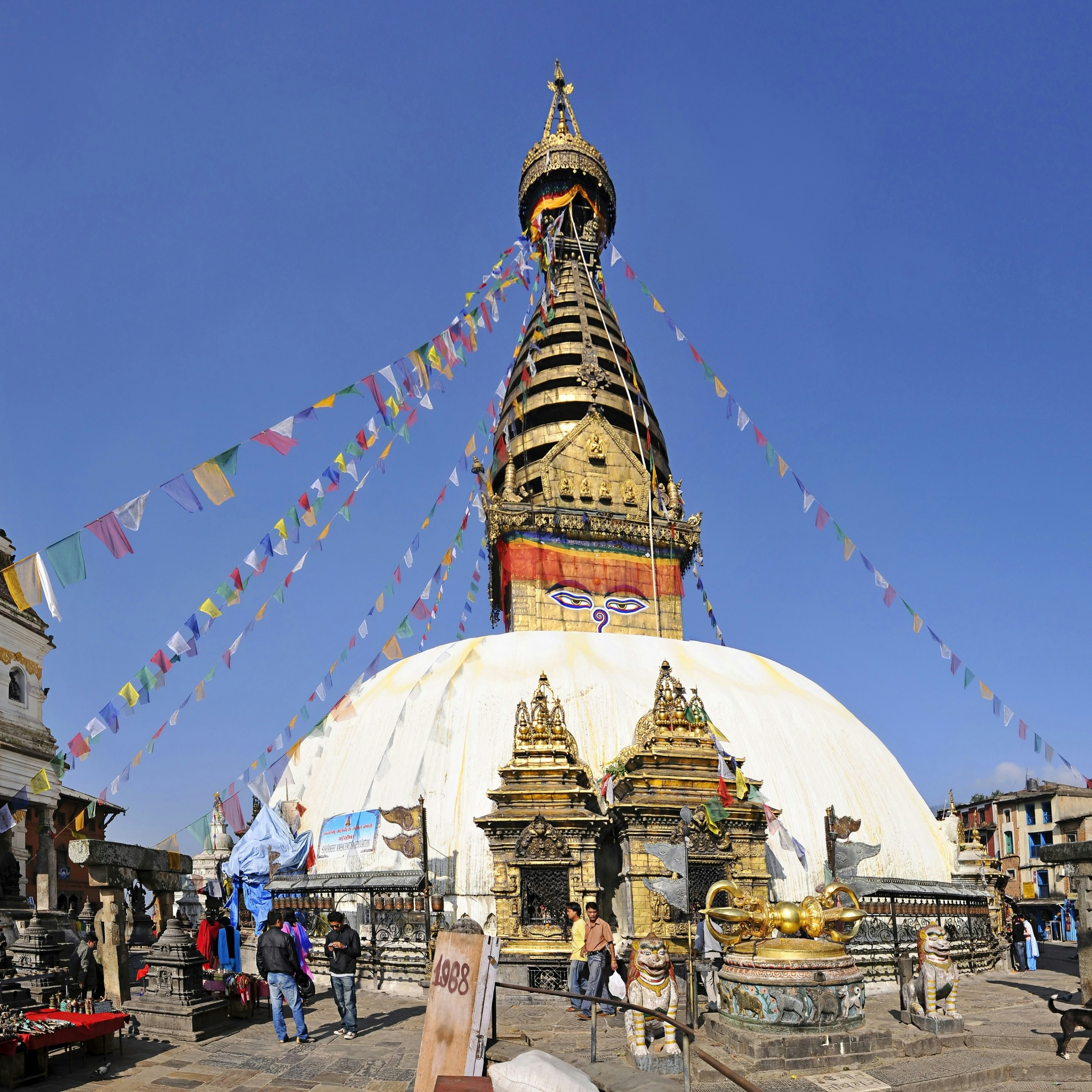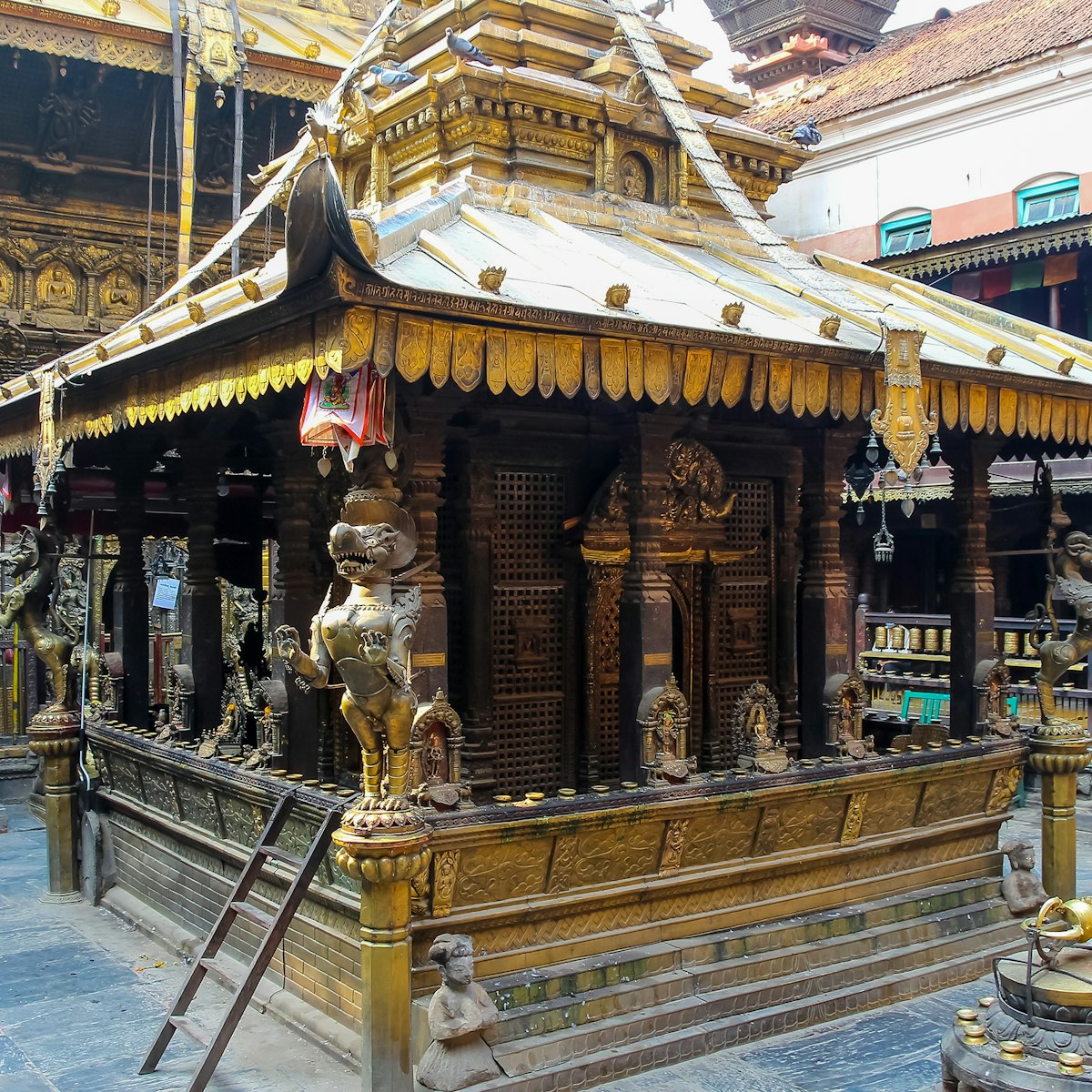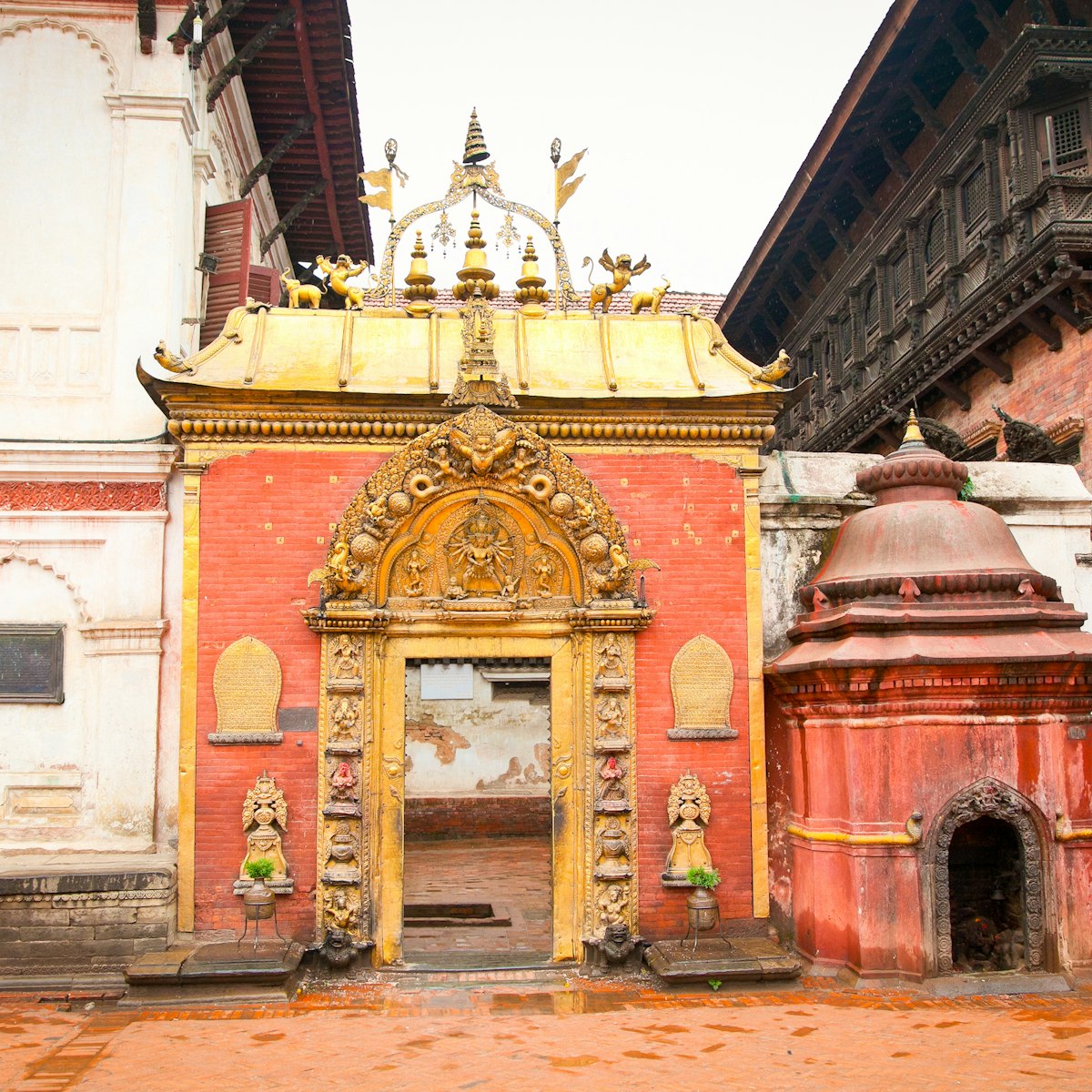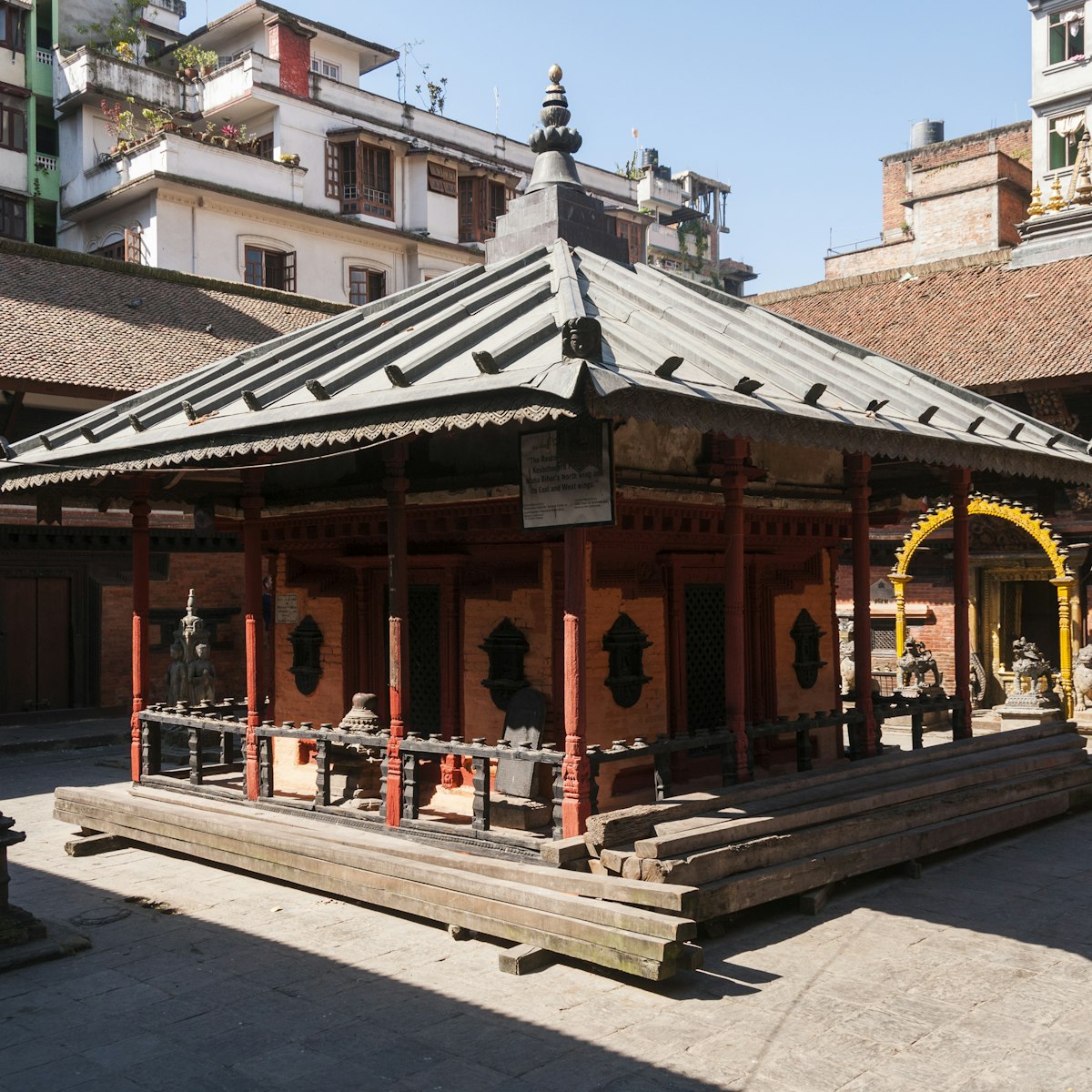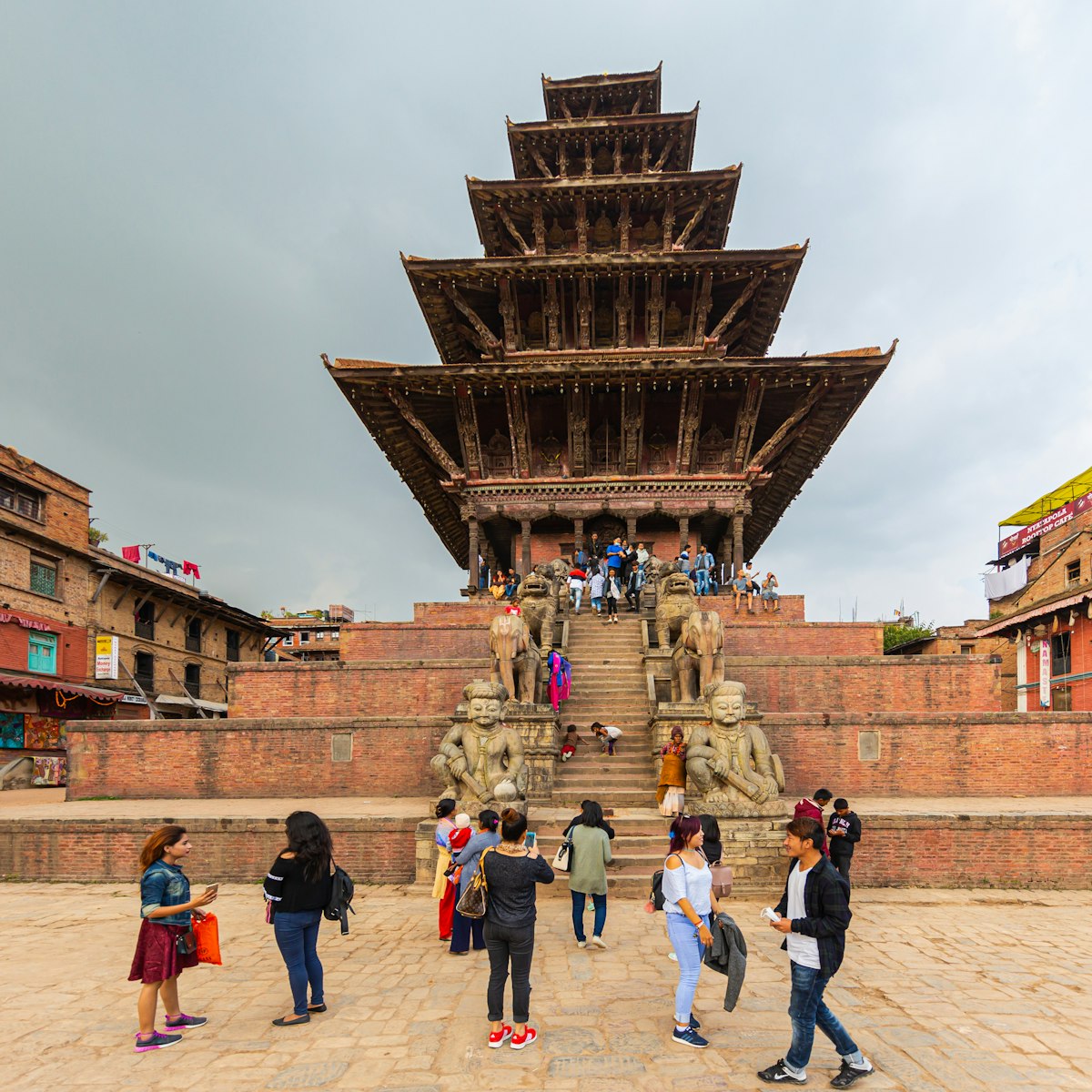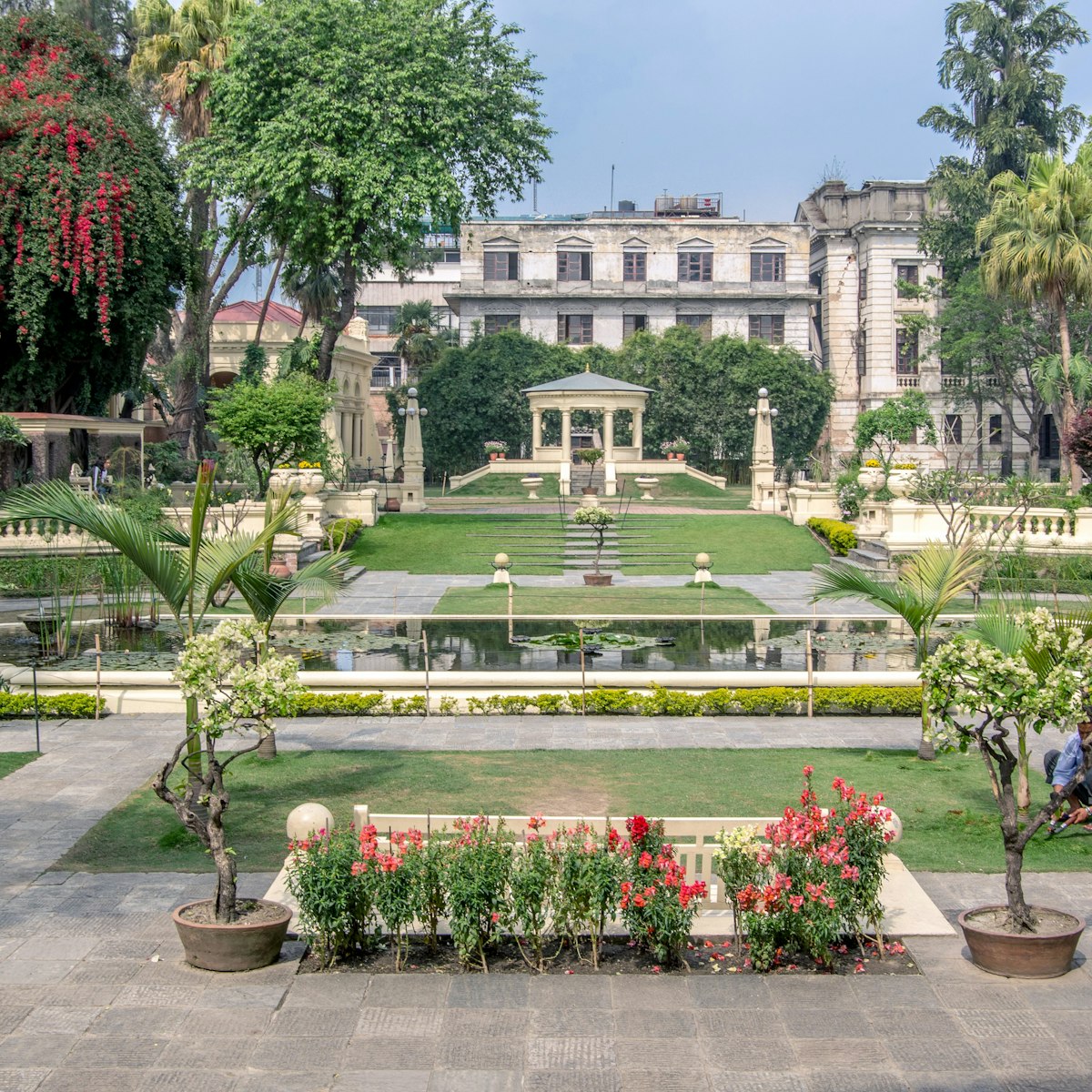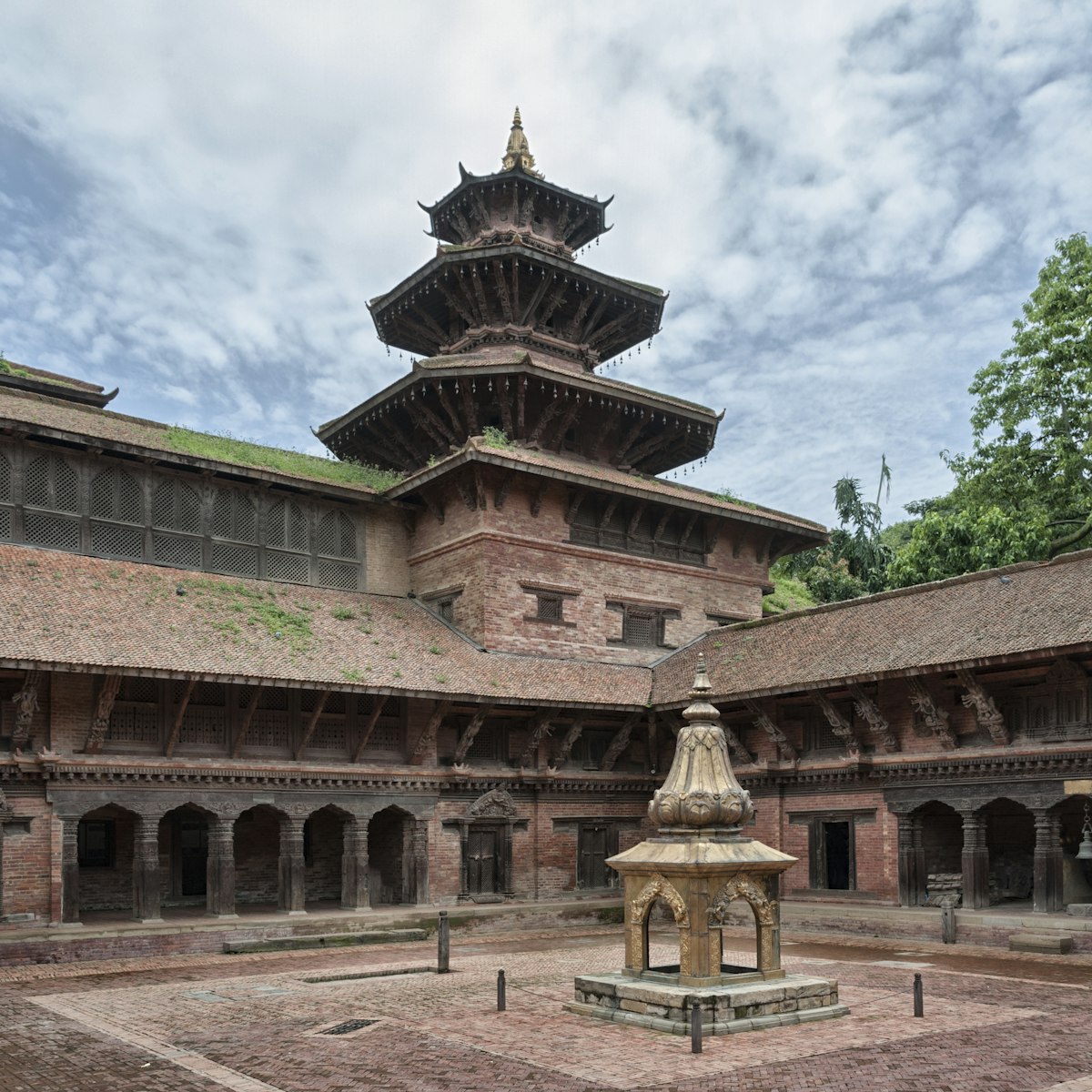Kathmandu's royal palace, known as the Hanuman Dhoka, was originally founded during the Licchavi period (4th to 8th centuries AD), but the compound was expanded considerably by King Pratap Malla in the 17th century. Sadly, the sprawling palace was hit hard by the 2015 earthquake and damage was extensive. At the time of research, the main Nasal Chowk courtyard was open and the Tribhuvan Museum was close to reopening, with other buildings closed for reconstruction.
Even from the outside, the palace is impressive. Hanuman’s assistance to the noble Rama during the exciting events of the Ramayana has led to the monkey god’s appearance guarding many important entrances. Here, cloaked in red and sheltered by an umbrella, a Hanuman statue marks the dhoka (entrance) to the Hanuman Dhoka and has even given the palace its name. The statue dates from 1672; the god’s face has long disappeared under a coating of orange vermillion paste applied by generations of devotees.
Standards bearing the double-triangle flag of Nepal flank the statue, while on each side of the palace gate are gaudy stone lions, one ridden by Shiva, the other by his wife Parvati. Above the gate a brightly painted niche is illustrated with a central figure of a ferocious Tantric version of Krishna. On the left side is the gentler Hindu Krishna in his traditional blue colour accompanied by two of his gopi (milkmaids). On the other side are King Pratap Malla and his queen.
The Hanuman Dhoka originally housed 35 courtyards (chowks), but the 1934 earthquake reduced the palace to today’s 10 chowks.
Nasal Chowk
Your main taste of the royal palace will be this handsome courtyard inside the main entrance. Nasal Chowk was constructed in the Malla period, but many of the buildings around the square are later Rana constructions. During the Rana period, Nasal Chowk was used for coronations, a practice that continued until as recently as 2001 with the crowning of King Gyanendra here. The former coronation platform stands in the centre of the courtyard, while the damaged Basantapur (Kathmandu) Tower looms over the southern end of the courtyard.
Beyond the door is the large Narsingha Statue, Vishnu in his man-lion incarnation, in the act of disembowelling a demon. The stone image was erected by Pratap Malla in 1673 and the inscription on the pedestal explains that he placed it here for fear that he had offended Vishnu by dancing in a Narsingha costume. The Kabindrapur Temple in Durbar Sq was built for the same reason.
Next is the Sisha Baithak (Audience Chamber) of the Malla kings. The open verandah houses the Malla throne and contains portraits of the Shah kings.
At the northeastern corner of Nasal Chowk stands the damaged Panch Mukhi Hanuman Temple, with its five circular roofs. Each of the valley towns has a five-storey temple, although it is the great Nyatapola Temple of Bhaktapur that is by far the best known. Hanuman is worshipped in the temple in Kathmandu, but only the priests may enter.
In Nepali nasal means ‘dancing one’, and Nasal Chowk takes its name from the Dancing Shiva statue hidden in the whitewashed chamber on the northeastern side of the square.
On display along the east side of the courtyard are the palanquins used to carry Queen Aishwarya during her wedding to Birendra in 1970 and later to transport her body to her cremation in 2001. Also displayed here is the royal throne.
Tribhuvan Museum
The palace wing to the west of Nasal Chowk, overlooking the main Durbar Sq area, was constructed by the Ranas in the middle to late part of the 19th century after they wrested power from the royal Shah dynasty. Ironically, it later became a museum celebrating King Tribhuvan (r 1911–55) and his successful revolt against their regime, along with memorials to Kings Mahendra (r 1955–72) and Birendra (r 1972–2001). Sadly, this wing of the palace bore the brunt of the damage in the 2015 earthquake. The museum was due to open in 2018, though it is unclear at this stage whether such unusual treasures as the king’s favourite stuffed bird and his Land Rover, with the scars of an attempted assassination, survived the disaster.
Rising above the museum is the nine-storey Basantapur (Kathmandu) Tower (1770), which once stood like a beacon at the end of Freak St. Unfortunately, the upper tiers collapsed during the earthquake and the tower is closed to visitors while it is repaired with Chinese assistance.
Lohan Chowk & Mul Chowk
These two courtyards are currently under renovation but should eventually reopen. The first square you reach after the Tribhuvan Museum is Lohan Chowk. This courtyard was formerly ringed by four red-coloured towers constructed by King Prithvi Narayan Shah, representing the four ancient cities of the valley. The upper parts of the Basantapur (Kathmandu) Tower and Bhaktapur Tower (Lakshmi Bilas) collapsed in 2015, but the Kirtipur Tower and Patan (Lalitpur) Tower (known more evocatively as the Bilas Mandir, or House of Pleasure) are still standing.
North of Lohan Chowk, Mul Chowk was completely dedicated to religious functions within the palace and is configured like a vihara, with a two-storey building surrounding the courtyard. Mul Chowk is dedicated to Taleju Bhawani, the royal goddess of the Mallas, and sacrifices are made to her in the centre of the courtyard during the Dasain festival. Non-Hindus are not allowed in the square, but you can get views from the doorway in the northeastern corner of Nasal Chowk.
Mohankali Chowk & Sundari Chowk
On the northern side of Nasal Chowk, a beautifully carved doorway leads to the Malla kings’ private quarters, which rank as the oldest parts of Hanuman Dhoka. This area was also damaged and reconstruction may take some years. Until then, both courtyards remain closed.
The first courtyard is Mohankali (Mohan) Chowk, which dates from 1649. At one time, a Malla king had to be born here to be eligible to wear the crown. (The last Malla king, Jaya Prakash Malla, had great difficulties during his reign, even though he was the legitimate heir, because he was born elsewhere.) Impressive wood carvings line the wall alcoves, many of them depicting the exploits of young Krishna, and the central hiti (water reservoir) is the palace's finest.
Pride of place in the intimate black-and-white Sundari Chowk behind is the ritual bathing pool with its Lichhavi-era carving of Krishna subduing the coils of the Kaliya serpent, hewn from a single block of stone in the 6th century. The Malla kings would ritually bathe each morning at the golden waterspout, whose waters allegedly flow from Budhanilkantha in the north of the valley.
